 MARCEL VENABLE
.
April 29, 2021
.
Department
MARCEL VENABLE
.
April 29, 2021
.
Department

When most people see a great-looking paint job, one with deep colors and shine, they think the work stops after the last coat of clear has been sprayed. In reality, the application of the paint and clearcoat is just another prep step towards a quality paint job. Color sanding and rubbing (or buffing) will be required to obtain the high gloss, almost glass-like finish that we all crave.
 Most people aren’t familiar with this finishing process, though. They don’t realize that it’s very labor intensive and demands a lot of time. There’s also a special tool required to give paint the wet look. A high-speed rotating grinder with a soft wool or sponge pad creates friction and heat to literally melt the clearcoat into a clean and even surface. Let’s take a look at the science behind the whole color sanding and buffing process, because I’m sure to most of you it seems crazy to drag sandpaper across an entire paint job that has just been perfectly applied, and then risk burning it clean off with a large grinder or buffer.
Most people aren’t familiar with this finishing process, though. They don’t realize that it’s very labor intensive and demands a lot of time. There’s also a special tool required to give paint the wet look. A high-speed rotating grinder with a soft wool or sponge pad creates friction and heat to literally melt the clearcoat into a clean and even surface. Let’s take a look at the science behind the whole color sanding and buffing process, because I’m sure to most of you it seems crazy to drag sandpaper across an entire paint job that has just been perfectly applied, and then risk burning it clean off with a large grinder or buffer.
It makes perfect sense, though, because during the curing process of the clearcoat, temperature, humidity and pressure from the clearcoat’s delivery (from either the gun or the technique of the applicator) affects the way the material lays on the vehicle. We’ve all heard the term “orange peel.” When light hits a reflective surface that’s uneven the light bends in different directions, causing it to look dull and accentuating the fact that the surface is uneven, like an orange peel. The light will even cast different, undesirable colors.
The first step in correcting this problem is to sand the surface to a flat and consistent level. This will allow light to be reflected back towards you just like a mirror. With a surface that’s flat and even, the light has no choice but to reflect back towards its source.
But hold on a minute, using sandpaper on clearcoat means that the user literally scratches the paint down to a dull, flat sheen. So how do you get it to shine? The technology of using paste abrasives and compounds dates back centuries. Jewelers used these materials, including soft buffing wheels and heat, to polish rocks into Jewels. The same idea applies to paint on vehicles. The “cut and rub” job is nothing new to the professionals at Meguiar’s Car Care Products, so we stopped in to learn from their expertise.
Meguiar’s was founded in 1901 during a time when the automobile and the automotive paint world were in their infant stage. Cutting and buffing paint was a cutting-edge technology then. Yet, the same goes for today, as constant changes in clearcoat formulas and application equipment means that one product may or may not work as well as another. So a wide range of products and applications is very important to achieve a top-notch finish.
Recently, we witnessed the completion of a paint job on an early C-10 truck that was in need of a good color-sand and buff job, so we asked the professionals at Meguiar’s to walk us through the process, giving us some tips on what to do, and what not to do. Follow along as we share what we learned, and you too can use these steps to get your truck to look like a glistening wet sheet of glass!



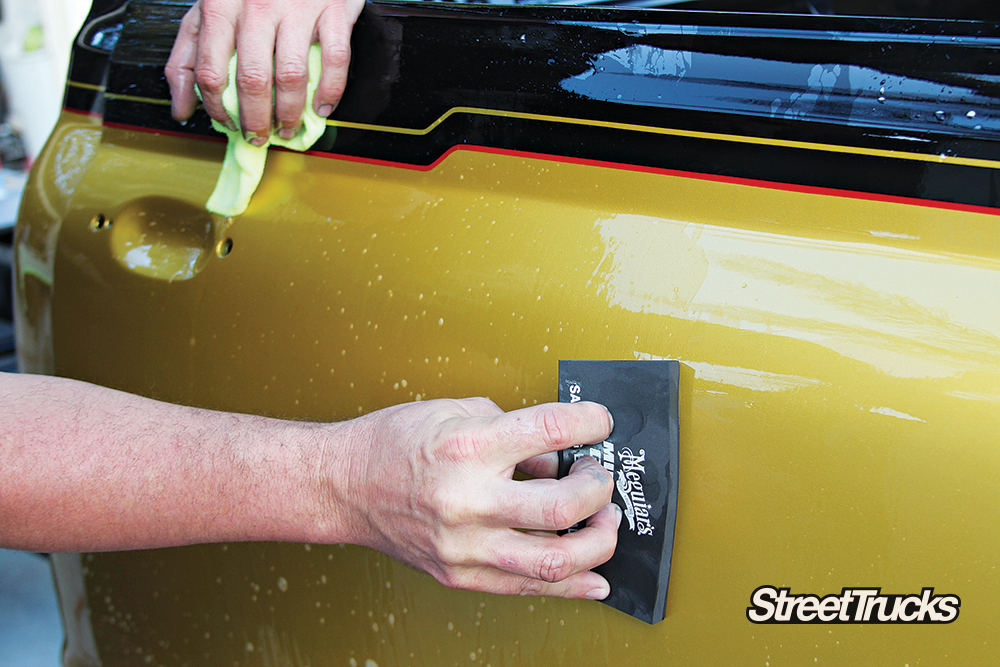



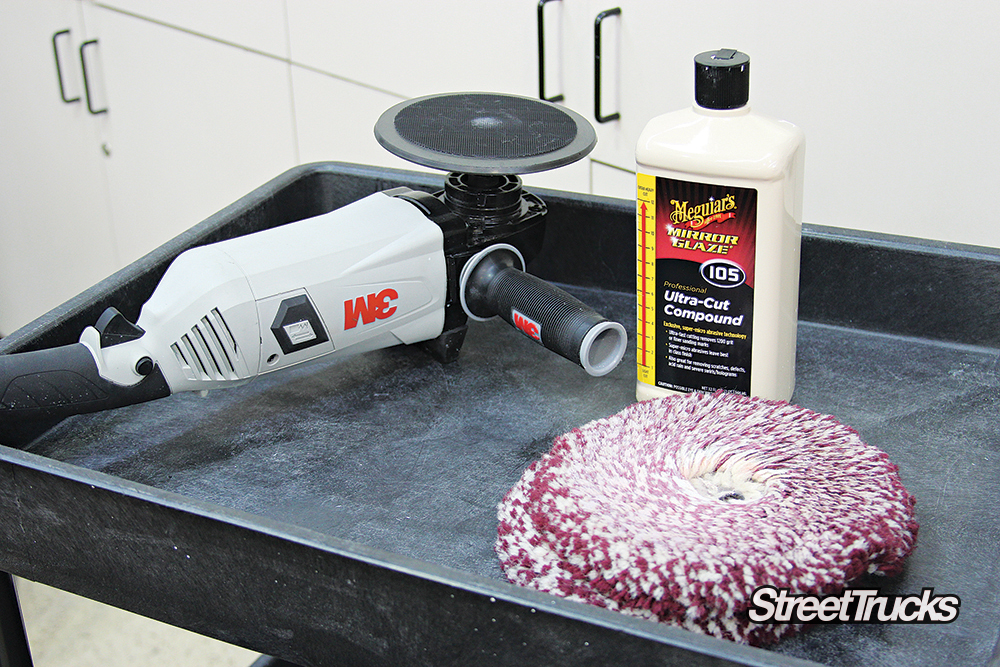
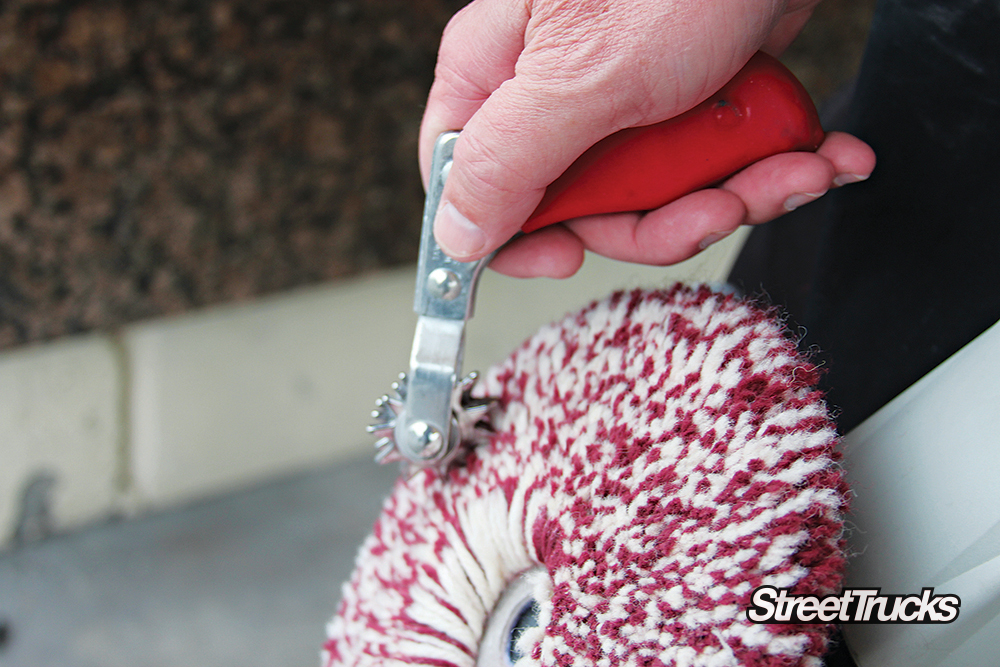
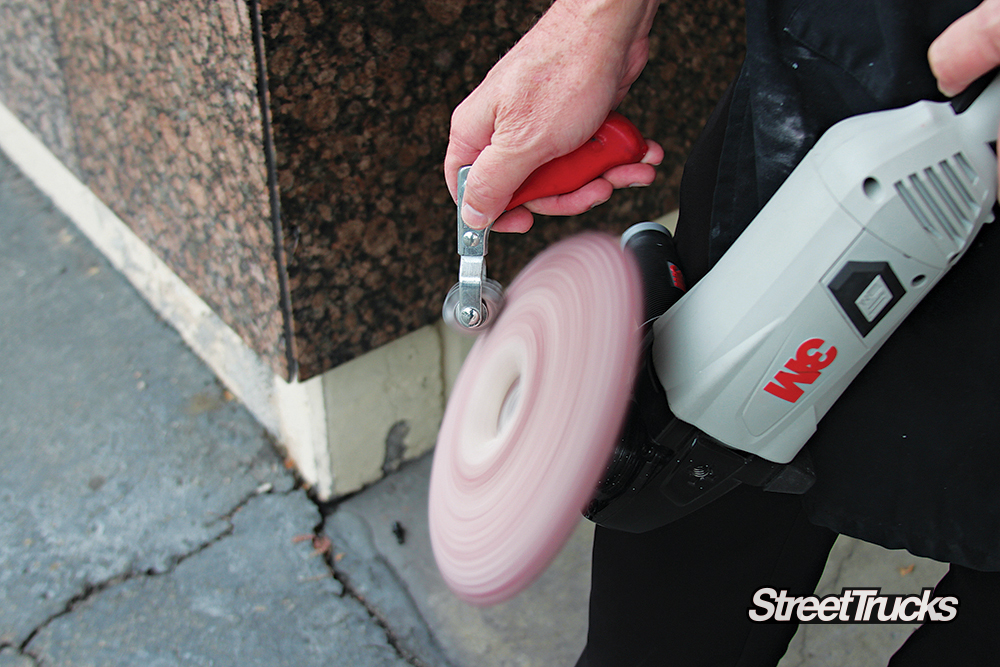
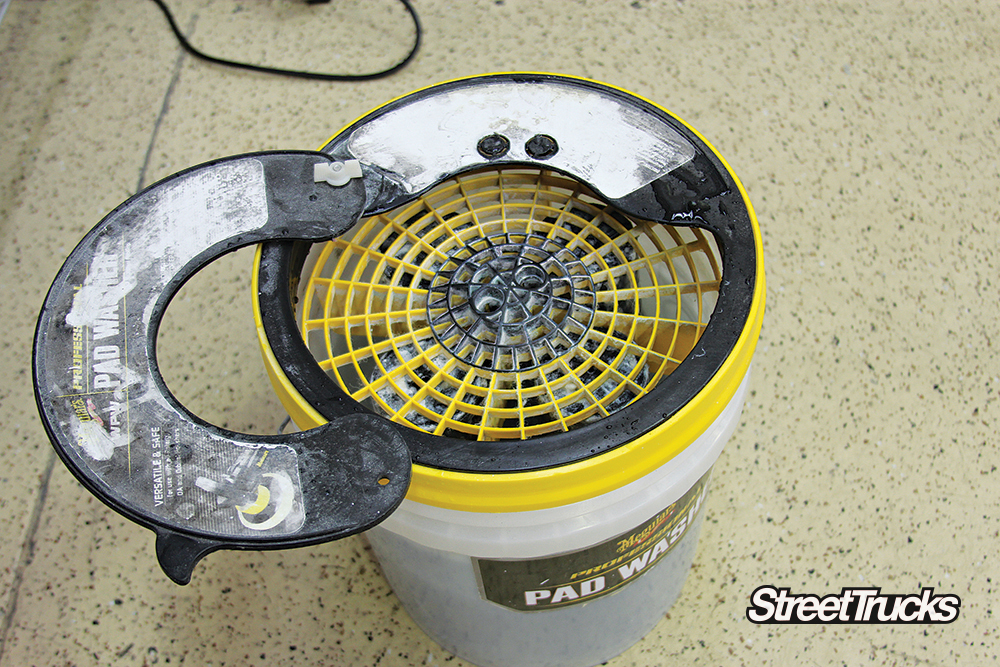
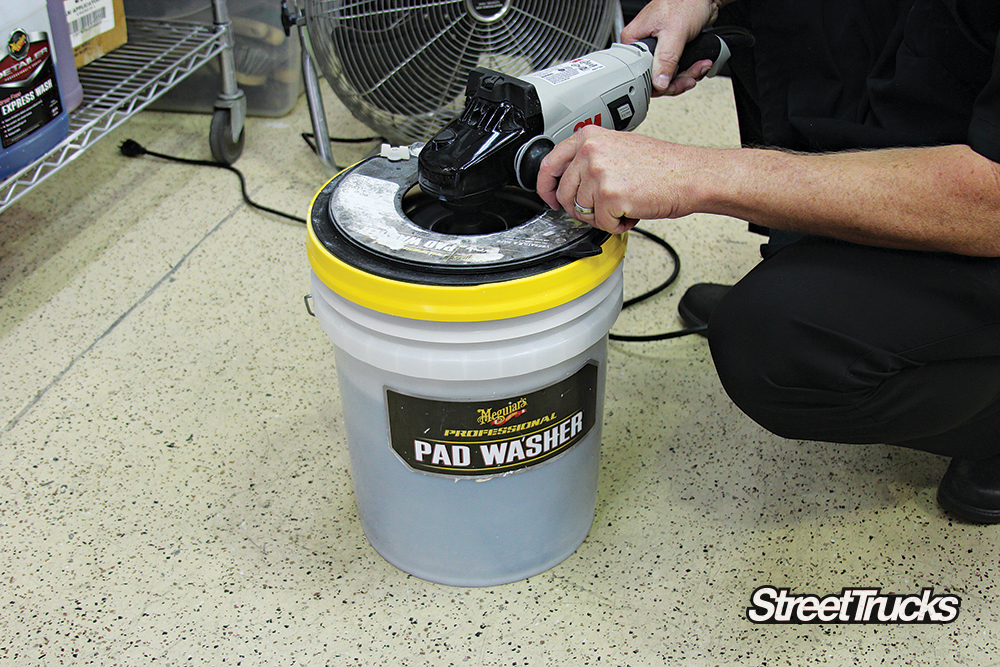
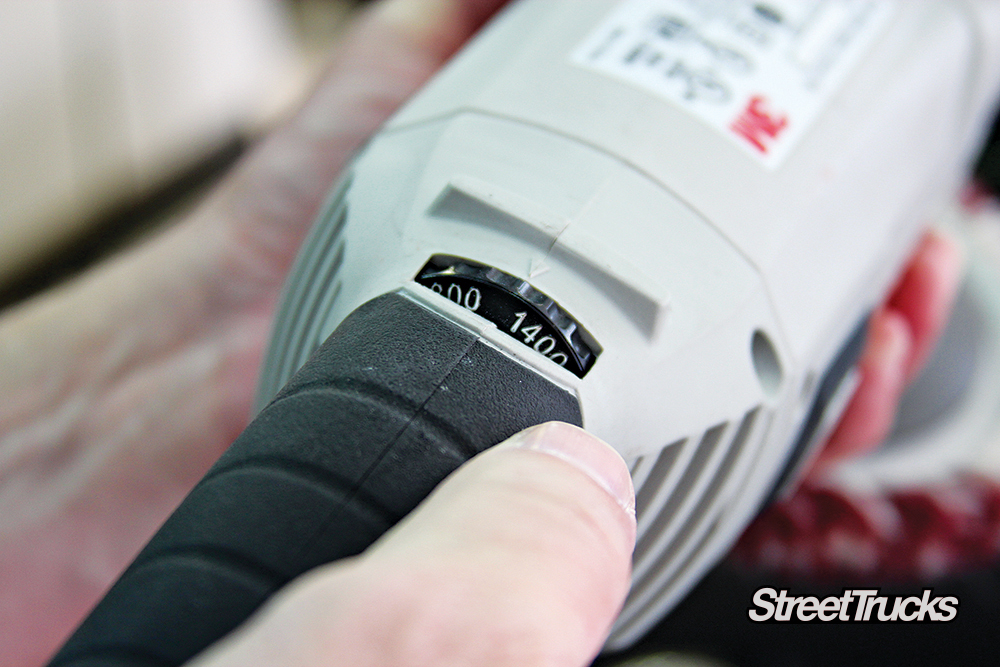


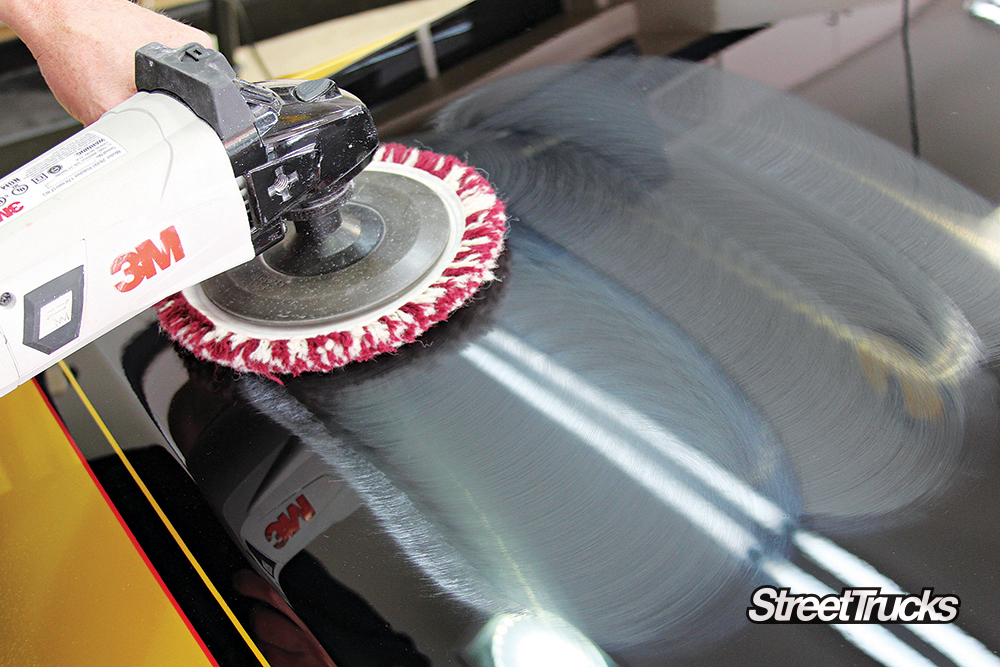

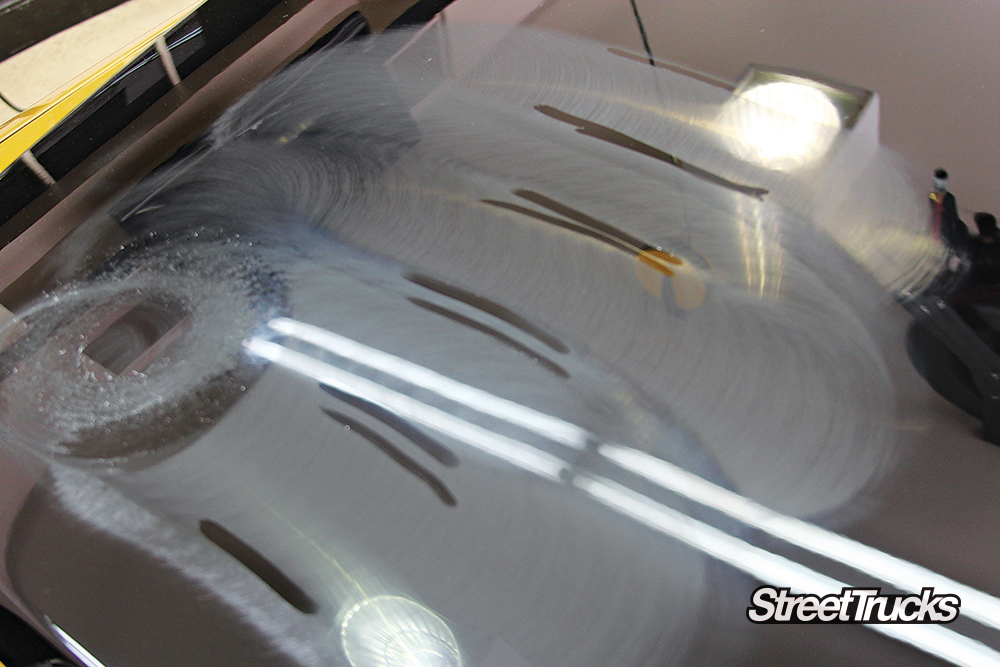

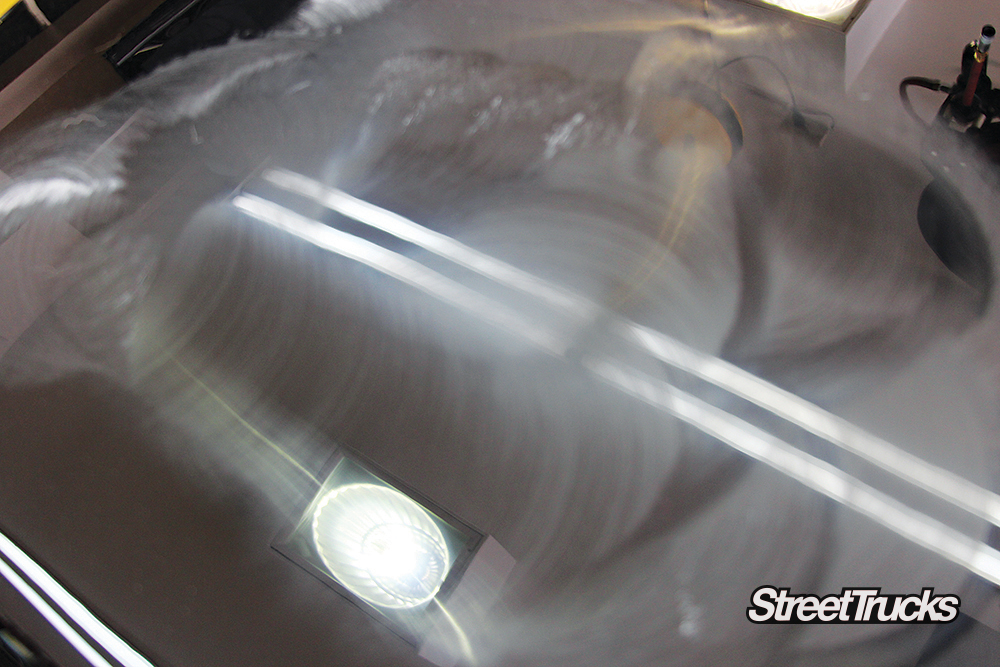



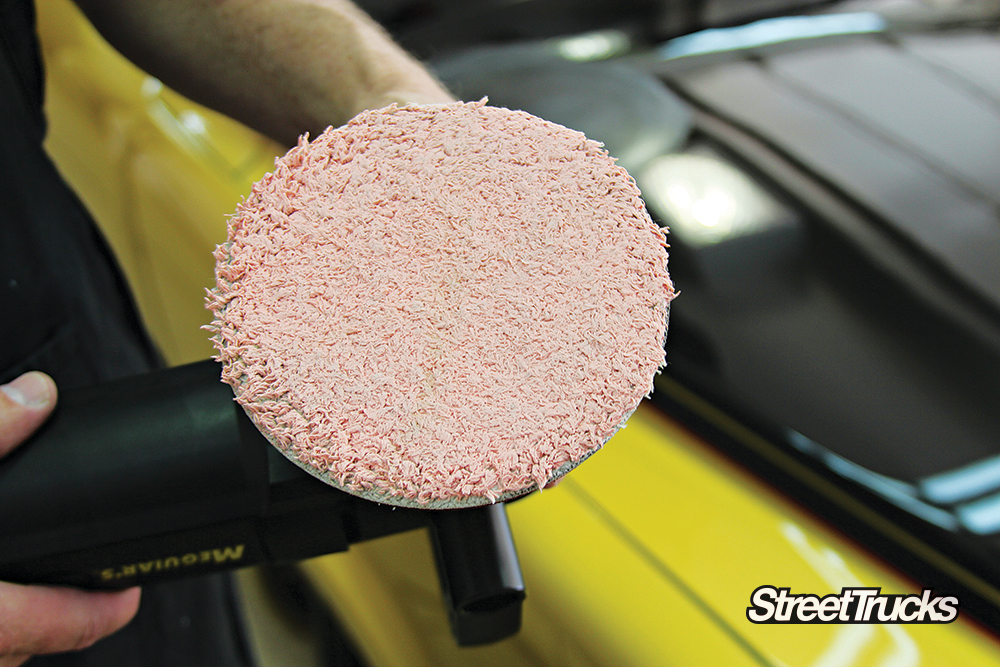



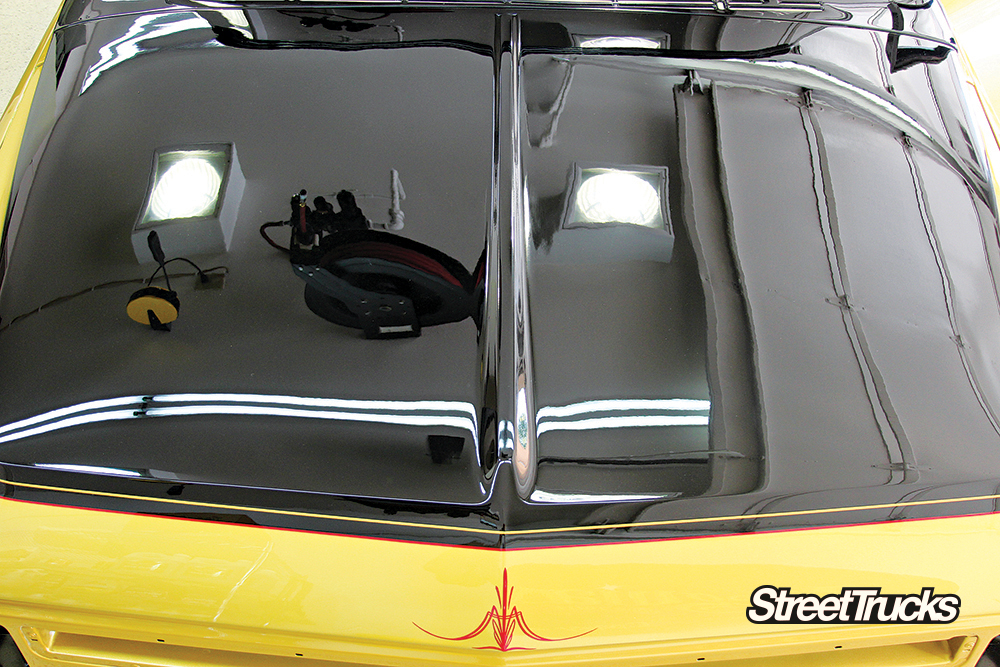
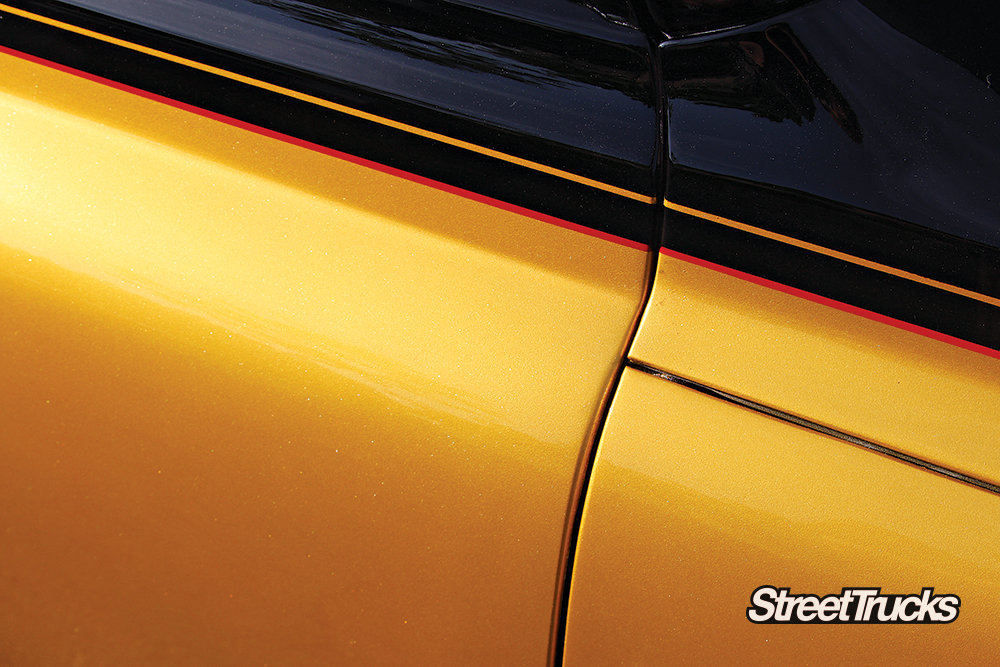

What is the process for using 1000-grit and 1200-grit sandpapers in wet sanding?
When embarking on a wet sanding project, the choice and sequential use of sandpapers are critical for achieving a smooth, high-quality finish. Here’s a step-by-step guide on how to effectively use 1000-grit and 1200-grit sandpapers:
Utilizing this technique will equip you with a smoother, more polished surface, setting a great foundation for subsequent detailing and finishing steps.
What type of sandpaper is recommended for the initial stages of wet sanding?
For the initial stages of wet sanding, it is advisable to use sandpaper with a uniform grit size and distribution. This helps to minimize the risk of tracers, which are larger, random scratches that can mar the surface.
Utilizing these types of sandpaper will set a solid foundation for achieving a smooth, professional finish.
How much polishing compound is typically needed for an average car during this process?
When polishing an average-sized car, you can expect to use approximately 8 to 12 ounces of polishing compound. This range ensures that you have enough product to cover the entire vehicle while achieving a consistent, high-quality finish.
By using the right amount, you’ll ensure your car’s paintwork looks its best without wasting product.
What sandpapers are used in the dry sanding steps, and what grits are recommended?
In the dry sanding process, two specific grits of sandpaper are commonly used to achieve a smooth finish.
By sequentially using 1,500-grit and then 2,000-grit sandpapers, the dry sanding steps effectively refine the surface, preparing it for subsequent finishing processes.
What precautions should be taken when sanding and polishing near edges and corners?
When working on edges and corners, sanding and polishing require extra caution to avoid damaging the surface. Here are some important tips to keep in mind:
Following these guidelines will help you achieve a smooth, uniform finish while protecting the integrity of your paint job.
What is the purpose of using 3,000-grit foam discs in the final wet sanding step?
The use of 3,000-grit foam discs in the final wet sanding step serves a crucial purpose. These ultra-fine discs help to refine the surface, smoothing out any remaining imperfections from previous sanding steps.
In summary, 3,000-grit foam discs are instrumental in the final wet sanding stage, setting the foundation for a flawless, professional finish.
What are the steps involved in the buffing process after wet sanding?
Here’s a look at some of the products plus the equipment that we will be schooled in today by the pros at Meguiar’s. To you professionals, the rotary-style buffer that looks like a grinder and the heavy-duty wool cutting pad are nothing new, but for the average Joe it looks like a nightmare. Hey, not to worry, we’ll give you guys some tips on how to master the rotary buffer. Our first compound is from Meguiar’s Professional Mirror Glaze line, referred to as 105 or Ultra Cut Compound. This formula is one of the heaviest cutting compounds, making it a fast cutting product that produces a deep shine. Used with a rotary buffer and Meguiar’s WWHC7 solo wool pad this is the choice of the pros hands down.
The first step of the buffing process starts with a Crest wool pad and 3M Perfect-It rubbing compound #1. Protect any panel gaps by taping over them to keep compound and water out. Set your buffer speed in the 1,500 to 2,000 rpm range. Be mindful of your pressure and avoid allowing the pad to get up on its edge.
Next, switch to an Adams course honeycomb foam pad while continuing to use the 3M #1 compound. This pad is less aggressive than the wool pad, which is where you will really start to see the paint shine.
Take a break from polishing and use a Norton Blue Magnet micro fabric cloth to clean and dry the surface. This allows you to check your progress and ensure you haven’t missed any spots.
Keeping the pad clean is extremely important during the process because a fast cutting compound that contains heavy abrasives can load up on the pad, causing more harm than good. Running a spur tool over the pad before and in between sessions is a great way to keep the pad free from old, dried-out compound. If you think you’ll be polishing your vehicle or someone else’s vehicle consistently, then you might want to look into picking up one of Meguiar’s Professional pad washers to extend the pad’s life span and bring better results to your work. The Ultra Cut Compound calls for a rotation speed range from 1,000-2,000 rpm. Based on tips from the instructors at Meguiar’s and our skill level, we ran the buffer at 1,400 rpm with the 105 compound. There really is a difference between a high-speed grinder and a high-speed buffer: The buffer’s speed can be controlled and a grinder’s speed is constant. If you’re not really sure how fast to spin the buffer, then check the label on the bottle or start out slow and work your way up to speed until you see results.
To begin, spread a line of compound on the surface, then starting from the right side of the compound line, quickly run the buffer over the compound to the left, this will load the pad without flinging material everywhere. Use steady, almost firm pressure over the pad and work in small 2 x 2-foot areas on the vehicle.
Work the compound into the paint again with firm yet even pressure in a small 2 x 2-foot area, making sure to overlap your side-to-side passes at a 50% pattern. We ran our fingers over the compound’s leftover haze to show you how each pass overlaps the previous within the 2 x 2-foot area.
Here’s a look at what you don’t want to do. Don’t try to run the buffing wheel on the edge of the pad. The heat from the pad can concentrate in a single area, resulting in damage. Uneven pressure on the pad will leave you with this type of pattern and an uneven shine. Here’s a tip that we picked up from the Meguiar’s guys: If the buffer starts to hop around, use your grip hand (the one in the back holding the trigger) and point it towards the 10 o’clock position. This should right the buffer back into balance, allowing you to regain control and apply even pressure to the pad. Try to see the buffer as your friend, not your enemy.
For the last step, use a Meguiar’s gray foam pad with 3M Perfect-It machine polish #2. Work with this until you are satisfied with the results. If you’ve done everything correctly up to this point, your shine should be perfectly clear and reflect as cleanly as a mirror.
Even the best in the business need to play it on the safe side, and one of the greatest ways to prevent burnt edges is to run a layer of masking tape on an opposing edge to prevent the buffing wheel from running over it. Remember that there’s a tool for everything. A big wool pad won’t allow you to get into small detailed areas like the top edge of the doors or even around windows. After we finished cutting the surface of the clearcoat, it was time to move on to another form of compound that’s a little less invasive yet just as effective when used in concert with other Meguiar’sproducts. Correction Compound bridges the gap between the rotary buffer and DA or Dual Action polisher. A DA polisher is much safer than using a rotary. It’s not as effective for cutting, but it does wonders with polishing.
Dual Action rotation is much tighter than the rotary-style buffer, which means fewer swirl marks leftover from the cutting action of the heavy compound. The Correction Compound works best with one of Meguiar’s microfiber polishing pads. Make sure that you clean the pad in between the application of the Correction Compound as often as possible, however, don’t use a spur tool to clean this pad or it may tear, just use some compressed air and blow it clean before putting more of the compound onto the pad. Again, work in 2 x 2-foot sections using moderate to firm pressure.
How do you achieve a show-perfect shine on new paint through wet sanding and polishing?
When most people see a great-looking paint job, one with deep colors and shine, they think the work stops after the last coat of clear has been sprayed. In reality, the application of the paint and clearcoat is just another prep step towards a quality paint job. Color sanding and rubbing (or buffing) will be required to obtain the high gloss, almost glass-like finish that we all crave.
Meguiar’s Unigrit line of finishing paper is the industry standard for color sanding, clearcoat and paint materials. For this project we’ll start sanding with the coarsest grit, 1,000, and work our way up the line, ending at 2,500 grit. A finishing pad or block will help us sand the orange peel down to an even, flat surface, providing the perfect prep for buffing out the clearcoat shine.
Here’s a look at some of the products plus the equipment that we will be schooled in today by the pros at Meguiar’s. Our first compound is from Meguiar’s Professional Mirror Glaze line, referred to as 105 or Ultra Cut Compound. This formula is one of the heaviest cutting compounds, making it a fast cutting product that produces a deep shine. Used with a rotary buffer and Meguiar’s WWHC7 solo wool pad this is the choice of the pros hands down.
Now that we have cut the clearcoat using two different levels of cutting compounds, it’s time to polish the clearcoat to bring out the glass-like finish we’re looking for. Meguiar’s new polish is D-302. Use this formula the same way you did the Correction Compound, except with the new formula you will use a different microfiber polishing pad that has more of a sponge-like backing pad. After a few passes you should start to see a mirror-like finish.
By combining the thorough step-by-step process with the original focus on Meguiar’s products, you can achieve that show-perfect shine on your new paint job. Follow these detailed instructions, and you’ll be well on your way to a professional, high-gloss finish.
What precautions should be taken during the process?
Tape over panel gaps to protect edges and prevent compound and water from entering gaps. Monitor your pressure during buffing and avoid letting the pad get up on its edge to prevent damage to the paint.
How should the sanding and buffing be performed?
Sanding should be done with a wet surface to act as a lubricant and coolant. Begin with 10-20 strokes of 1000-grit paper, then move to finer grits as you progress. Buffing starts with a wool pad and 3M Perfect-It rubbing compound #1 at a speed of 1500-2000 rpm. Follow with a less aggressive foam pad and the same compound, then finish with a gray foam pad and 3M Perfect-It machine polish #2.
What is the step-by-step process for sanding?
Start with 1000-grit sandpaper to remove the initial texture. Move to 1200-grit to begin eliminating finer scratches. Follow with 1500-grit and 2000-grit sandpaper, checking your progress frequently. Finish with 3000-grit Trizact foam discs, which will start to give the surface a polished look with a slight haze.
What specific materials and tools are needed?
You will need a variety of sandpapers, including 1000-grit, 1200-grit, 1500-grit, 2000-grit, and 3000-grit. Specific brands mentioned include Nikken and 3M. For buffing, you’ll need a Crest wool pad, Adams course honeycomb foam pad, and Meguiar’s gray foam pad, along with 3M Perfect-It rubbing compound #1 and #2.
Why is sanding and polishing necessary?
Sanding and polishing are essential because even the best paint jobs will have some texture or “orange peel” in the surface. Sanding removes this texture to create a flat surface, while polishing restores the shine and adds depth, resulting in a glass-like, high-gloss finish.
Why is it important to clean and dry the surface between polishing steps?
Keeping the pad clean is extremely important during the process because a fast cutting compound that contains heavy abrasives can load up on the pad, causing more harm than good. Running a spur tool over the pad before and in between sessions is a great way to keep the pad free from old, dried-out compound.
Equally crucial is maintaining a clean and dry surface between polishing steps. Any leftover residue or moisture can interfere with the effectiveness of the polish, leading to subpar results. A contaminated surface can cause abrasives to work unevenly, potentially scratching or dulling the finish.
Following these steps will help achieve a perfectly clear shine, reflecting as cleanly as a mirror. By focusing on both the cleanliness of the pad and the surface, you ensure that each polishing step builds towards an immaculate finish.
How should you check your progress during the wet sanding process?
Once you begin to cut open the paint, be sure to run a pad or a squeegee across the area that you are working on to clean away the loose materials and to check out your work. Be thorough and work in small sections in a crosshatch pattern before moving on to another area.
It’s important to dry the surface occasionally to check progress. You know you are done with this step when the surface is starting to look polished but still has a slight haze to it. This drying allows you to see the true state of the surface without the interference of water, ensuring you don’t miss any imperfections.
By combining these techniques, you can ensure a more accurate and refined finish. Remember:
This methodical approach will help you achieve professional-level results.
Share Link